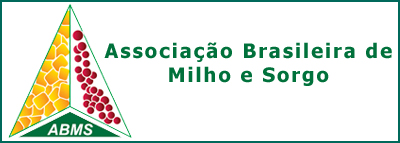SEVERITY OF CORN STUNT DISEASE ON MAIZE GENOTYPES IN THE MIDWEST OF THE BRAZILIAN STATE OF SANTA CATARINA
DOI:
https://doi.org/10.18512/rbms2022v21e1278Resumo
In an attempt to provide regionalized information about maize genotypes’ response to corn stunt disease complex, this study evaluated the corn stunt disease severity and productivity of conventional (7) and transgenic (11) maize genotypes under natural infestation of its insect vector, Dalbulus maidis (Hemiptera: Cicadellidae). The work was carried out in Campos Novos, SC, Brazil, during the 2020/2021 crop season. In a randomized block design, the genotypes were sowed in experimental plots of 14 m2 , with four replicates (plot) per genotype. At 90 days after sowing, the severity of corn stunt disease was analyzed using a visual symptoms scale, while the maize productivity was assessed at physiological maturation. There was variability for response to stunt disease in the genotypes and a negative correlation between severity and grain yield. Among the conventional genotypes, P3456, FS055, SCS154 Fortuna, SCS156 Colorado, and SCS155 Catarina had lower severity of corn stunt disease. For the transgenic genotypes, AS1757 PRO3 and P3551 PWU were more resistant, while B2418 VYHR, AG9025 PRO3, and P1225 VYHR had high corn stunt disease severity. The corn stunt severity varied from 1 (absence of symptoms) in P3551 PWU to 4.8 (more than 75% of leaves with symptoms) in P1225 VYHR, while the lowest and highest yields were obtained for BG7056 (1,253.7 kg.ha-1) and P3016 VYHR (9,794.6 kg.ha-1), respectively. The genotypes with low corn stunt disease severity are suitable options for sowing in the Midwest region of Santa Catarina, Brazil, in conditions of high population pressure of D. maidis.
Downloads
Publicado
Como Citar
Edição
Seção
Licença
Autores que publicam nesta revista concordam com os seguintes termos:- Autores mantém os direitos autorais e concedem à revista o direito de primeira publicação, com o trabalho simultaneamente licenciado sob a Creative Commons Attribution License que permitindo o compartilhamento do trabalho com reconhecimento da autoria do trabalho e publicação inicial nesta revista.
- Autores têm autorização para assumir contratos adicionais separadamente, para distribuição não-exclusiva da versão do trabalho publicada nesta revista (ex.: publicar em repositório institucional ou como capítulo de livro), com reconhecimento de autoria e publicação inicial nesta revista.
- Autores têm permissão e são estimulados a publicar e distribuir seu trabalho online (ex.: em repositórios institucionais ou na sua página pessoal) a qualquer ponto antes ou durante o processo editorial, já que isso pode gerar alterações produtivas, bem como aumentar o impacto e a citação do trabalho publicado



